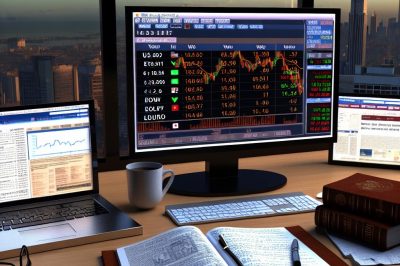Understanding the Forex Market
Trading currencies in the Forex market can be a lucrative endeavor, but it requires a comprehensive understanding of various factors that influence currency movements. The Forex market is the largest financial market globally, operating 24 hours a day, and involves trading currencies in pairs. Investors and traders buy one currency while simultaneously selling another. Selecting the right currencies to trade is critical and involves thorough analysis and research. For those interested in further insights into currency trading choices, visiting this resource can be extremely beneficial.
Assessing Economic Indicators
Currency values are significantly influenced by economic indicators, which provide information on a country’s economic health. Some of the most crucial indicators include:
- Gross Domestic Product (GDP): This reflects the economic output and growth rate of a country. A higher GDP indicates a strong economy, often leading to a stronger currency.
- Interest Rates: Currency values often rise when interest rates increase because higher rates offer better returns on investments denominated in that currency.
- Inflation Rates: Generally, lower inflation results in a stronger currency, as purchasing power increases.
- Employment Data: High employment levels usually signal stronger economic performance and currency strength.
Monitoring these indicators can provide insights into which currencies may strengthen or weaken, aiding in trading decisions. Economic calendars found online can be useful tools for keeping track of when important data releases are scheduled, allowing traders to prepare accordingly for potential market changes.
Geopolitical Events
Geopolitical events can heavily impact currency values. Events such as elections, changes in government policy, international conflicts, and trade agreements can create volatility. Traders should stay informed on geopolitical developments, as these can rapidly affect currency strength and market sentiment. Websites like BBC News and Forex.com are useful for staying updated on geopolitical news and its potential impact on currency markets.
Anticipating the effects of geopolitical changes involves studying historical reactions of the currency market to similar past events. Traders should be especially vigilant during times of significant geopolitical events, as these can lead to unexpected fluctuations.
Technical Analysis
Technical analysis involves using statistical trends, such as price movement and volume, to forecast future currency movements. Traders use various tools, including:
– Charts: Visual representations of historical price movement that can reveal patterns and trends.
– Indicators: Tools like moving averages and the Relative Strength Index (RSI) help identify potential entry and exit points.
Technical analysis requires practice and familiarity with market trends, but it can be a valuable tool for predicting currency movements. For free charting tools and technical indicators, TradingView offers an array of resources.
Aside from understanding the basic concepts, traders should engage in regular practice and backtesting to refine their strategies. This can help build the intuition necessary to recognize whether a current market scenario might be repeating a historical pattern, thus aiding in making informed trading decisions.
Market Sentiment
Market sentiment refers to the overall attitude of traders toward a particular currency or market. If traders believe a currency will perform well, they are more likely to buy, which can drive up its value. Conversely, negative sentiment may lead to selling and decreased value. Traders can assess sentiment through:
– Commitment of Traders (COT) reports: These reports provide insight into the positions of futures market participants.
– Surveys and market forums: Online communities and surveys can offer a pulse on trader sentiment.
Understanding market sentiment can be particularly useful in identifying potential turning points in the market. Learning to gauge sentiment is a skill that develops over time and often results in gaining a competitive edge, as it allows traders to anticipate shifts that may not yet be reflected in market prices.
Risk Management and Diversification
Finally, effective risk management is essential when trading currencies. Traders should diversify their portfolios to reduce exposure to any single currency’s volatility, using strategies such as setting stop-loss orders to limit potential losses. Platforms like IG offer risk management tools that can help traders protect their investments.
A cornerstone of successful trading is the ability to manage risk effectively. This includes not only diversification and the use of stop-loss mechanisms but also developing a comprehensive trading plan that includes well-defined risk-reward ratios. Regularly reviewing and adjusting this plan to reflect changes in market conditions or personal financial circumstances is vital in maintaining robustness in trading strategies.
By combining these strategies, traders can make informed decisions about which currencies to trade, increasing the potential for success in the Forex market. The integration of a solid understanding of economic indicators, geopolitical awareness, technical analysis skills, market sentiment insights, and diligent risk management forms the basis for success in currency trading. This holistic approach enables the trader to navigate the complexities of the Forex market with greater confidence and precision.





